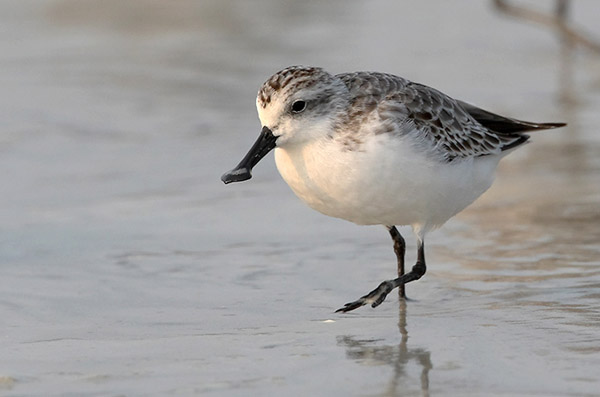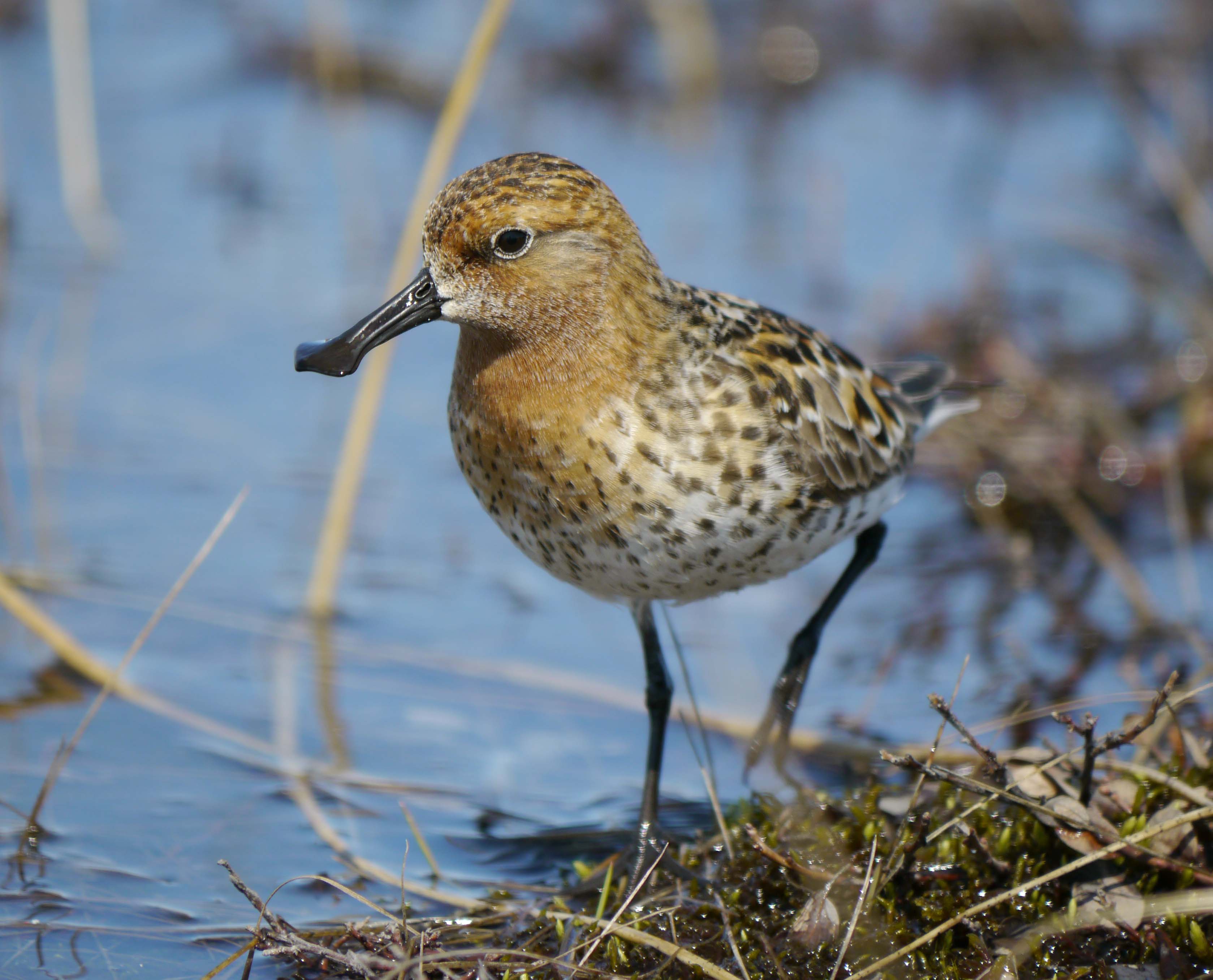
Eurynorhynchus pygmeus
SUBFAMILY
Calidrinae
TAXONOMY
Platalea pygmea Linnaeus, 1758, Surinam. Monotypic.
OTHER COMMON NAMES
French: Bйcasseau spatule; German: Lцffelstrandlдufer; Spanish:
Correlimos Cuchareta.
PHYSICAL CHARACTERISTICS
5.5–6.3 in (14–16 cm); male averages 1 oz (29 g), one female
1.2 oz (34 g). Distinctive spatulate bill. Red-brown head, neck,
and breast with dark brown streaks; blackish upperparts with
buff and rufous fringes; white belly. Female slightly larger.
DISTRIBUTION
Chukotskiy Peninsula to north Kamchatka; winters from India
to Indochina, south China and Singapore.
HABITAT
Coastal sand ridges, lakes, and marshes. Winters on muddy
coasts and mudflats.
BEHAVIOR
Territorial. Male’s display flight includes hovering, circling and
diving, and uttering a buzzing trill.
FEEDING ECOLOGY AND DIET
Insects, crustaceans, worms, mollusks, and seeds. Feeds in shallow
water or wet mud, sweeping the spatulate bill from side to side.
REPRODUCTIVE BIOLOGY
Monogamous. Nests June–July in moss, sedges, and creeping
osiers. Clutch contains four eggs; incubation occurs in 18–20
days, by both parents; female leaves when chicks are four to six
days old.
CONSERVATION STATUS
Vulnerable, with a small, declining population (2,500–10,000 in
2000) because of habitat loss throughout range, compounded
by disturbance and some hunting.
SIGNIFICANCE TO HUMANS
None known.
Other popular Animals
Photo Gallery of - Spoon-billed sandpiper




 Animalia Life
Animalia Life